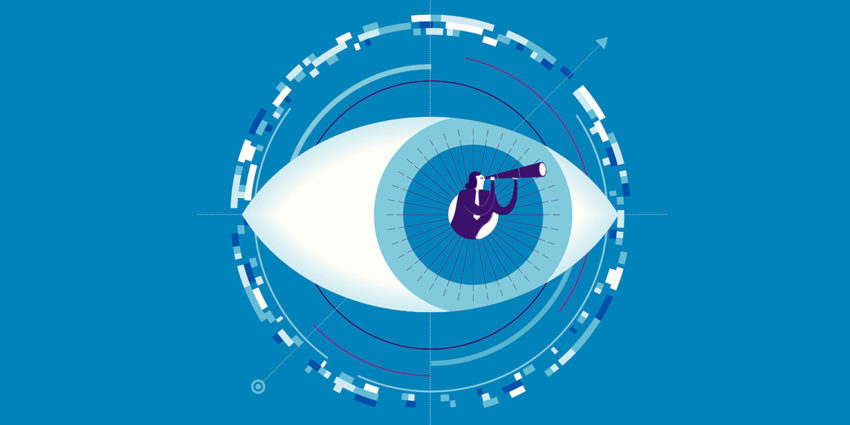We live in an era of blending industries, with new competitors popping up from the most unexpected places. Traditional investments in servers, labor and other requirements to build businesses are no longer barriers to entry these days with the wide availability of inexpensive cloud subscriptions and high-quality labor from remote locations. Associations are now competing with global organizations of all sizes.
If you haven’t realized yet, innovators are focusing on building new markets rather than competing for existing market share. But make no mistake, associations still need to focus on their core products and services to survive and raise member satisfaction. It’s the role of leaders to allocate a share of the organization’s attention from just improving the status quo to what lies ahead. From staff mindset shift, to resource allocations, to bringing members and customers insights into a more agile operations and R&D, associations have to position their operations into a new global environment.
Strong brands
Let’s start with branding, since it touches on both operations and positioning. Strong brands are not built within the marketing department, but instead through experiences that associations deliver through all touchpoints with members and customers. This means that brand ownership spreads through all employees and volunteers. Along with communications and messaging, user experience becomes a key element of building a brand and consequently future-proofing associations.
Carefully mapping customer and member journeys is one of the most important and basic steps any association can take. Start by creating the profiles of your organization’s key personas. Very often associations have at least two membership personas such as students and mature professionals. You may also have a few non-affiliated personas including conference attendees and certificants. These four groups have distinctive aspirations; analyzing how their needs are met through their journey consuming your services and products provides valuable real time customer insights to your marketing communications and operations teams. It also helps every employee and volunteer in the organization realize their impact on engagement. Without this level of transparency, both strategy and execution are based on guesswork. That is the difference between product versus customer centric organizations.
One of the reasons more and more organizations are adopting Design Thinking for innovation is that the strategic planning process starts with a comprehensive understanding of their user interaction and not the other way around. By applying its core principles of Customer Immersion, Analysis, Ideation, Testing and Implementation, organizations make decisions based on what customers really want instead of relying primarily on historical data or instinct.
Empowering Staff
This leads to another important part of the role of leaders: to empower staff. The leaders of the most successful organizations I’ve talked to are all about people, how you lead them, develop them and establish a culture in which they can thrive.
Create a culture that motivates constructive behaviors at every interaction with customers and members. Start by fostering an environment of knowledge and analytics sharing, from the top down, so employees can understand the impact of their actions. Create cross-functional teams to break silos, encouraging diverse perspectives and a healthy creative friction. Design tools as basic as presentation templates to allow staff and volunteers to localize their messages and be creative within the organization’s shared goals.
As a leader, provide your staff with the organization’s vision and psychological safety to experiment. It’s not possible to leverage staff and volunteers’ imagination and creativity if they do not understand the purpose and results of what they are doing.
Lastly, more than ever organizations are building wise ecosystems of partnerships to co-develop innovative products and services. This can also unveil scaling production and distribution opportunities, creating great value. These ecosystems can be built within your current value chain or across industries. They can include suppliers, distributors, customers, competitors, and government agencies. Boeing collaborated with fifty different vendors to create the 777 aircraft. The American Society for Quality worked with corporate customers to design new training programs.
A good way to visualize such opportunities is to constantly analyze all pain points your customers and members face before, during and after interacting with your brand. In that space lies lots of business opportunities to create innovation, solve member problems, increase satisfaction and brand loyalty, either independently or through partnerships.
These are some vital elements to foster a culture of growth through creativity and accountability. Focusing primarily on budget, cost cutting and stale long-term plans are no longer future proofing your organization, at least not in today’s environment.
This article was written by Renata Lima Lerch, a hands-on leader with international experience in Fortune 500, consulting, advertising agency and not-for-profit associations. She has managed global marketing and market development teams for over 20 years, delivering programs in the Americas, Europe, Asia and Australia. She has created transformational customer engagement initiatives using methodologies such as Design Thinking and Agile. Renata is the founder of Integrated Niche, a global and Agile Marketing think tank. The right to publish this article, in parts or in full, has to be granted by the Publisher.
